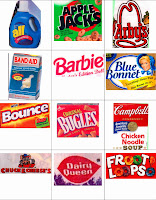If you or someone you know is learning to read - regardless of your/their age - here is the perfect place for you!
Check out this video that is an introduction to how to learn (and teach) to read and the importance of a process using familiar text (books you have seen or read before), every day items, and technology in this process. Below you will find some links on the pictures and on the text. Don't miss out!
This first part explains the reasoning and is mainly for those who can read, i.e. teachers, parents, coaches, etc. (Go to #3 if you just want to start playing... I mean, reading!):
1. Environmental print is very important in learning to read. Here are some great examples, lessons, and more!
2. Create a print-rich environment at home or at school by labeling everything! Yes, e-v-e-r-y-t-h-i-n-g!
3. (Click on any of the links and start learning!) Since most people have access to the internet and computers/ipads/smartphones, here are some great sites, videos, and games to help you learn to read or teach others to read!
Click HERE to hear this four-step process that will help you teach someone to read. It is simple to follow and very effective. This should take from 30-45 minutes.
1. Read four familiar items - could be a book, a game, a website, anything that the person has seen before and knows without much help from you.
2. Write a "story" using the person's knowledge (even if it is just one letter or sound) which contains high frequency words. This story can be a book or a 1-3 sentence thought which is easy for the person to remember. In the earlier stages of learning to read, the story must be represented by a drawing or image to trigger the memory for unknown words.
3. Introduce a new item - book, game, website, etc. by making sure to give enough information for the person to be successful when reading it (give the main idea, tricky words, unusual structures, etc.).
4. The learner takes the new item and, with your assistance, reads it. Go over words they did not understand and practice them using a dry erase board or magnetic letters in order to help them learn it.
IMPORTANT: anything you (or the person you're helping) learned new today must be revisited tomorrow. The goal of these four steps is to learn and teach new vocabulary. Make sure you are presenting and looking at the vocabulary in various ways.
Now, enjoy your success!
Please follow this link to another great presentation on how technology helps with reading.



